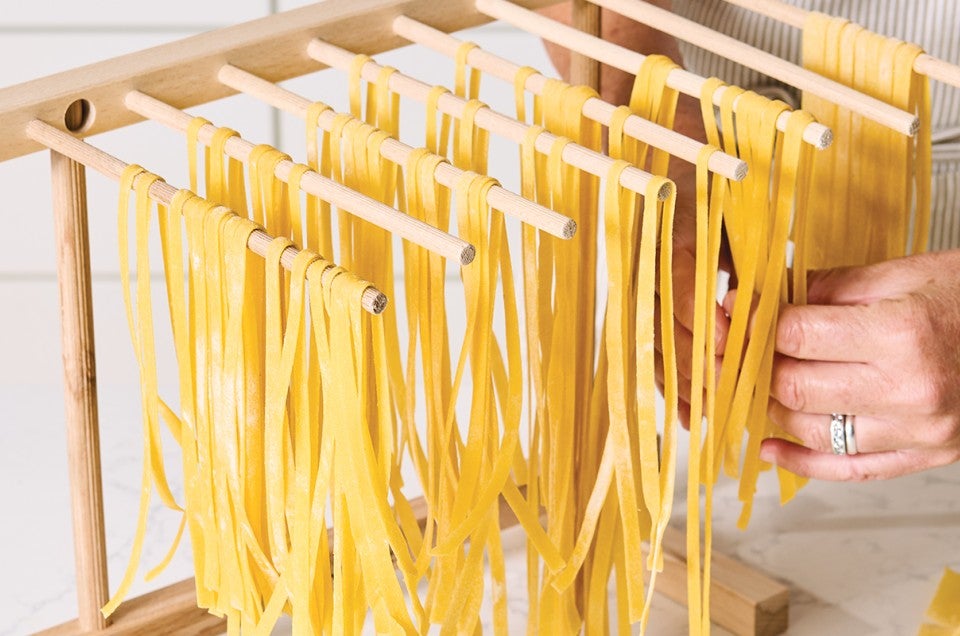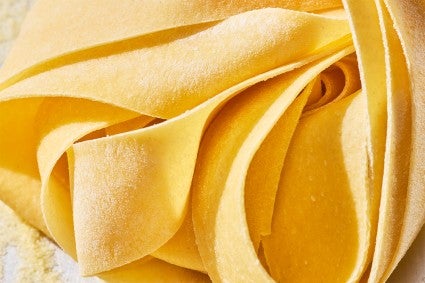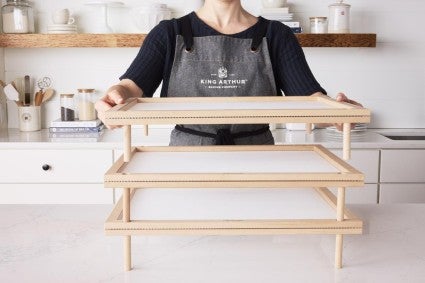


As great as it would be to eat freshly made pasta for dinner every night, there's not always time to bust out the pasta machine or rolling pin when busy schedules get in the way. But if you dry your pasta, it’s money in the bank: homemade pasta for dinner, with little effort (and even less time). If you’re dedicating a slow Sunday to making batches of fresh pasta, you can cook some that night and save the rest to eat over the course of the next month or so.
You can extend the life of your fresh pasta by drying it, though you should not expect your homemade dried pasta to be just like store-bought dried pasta (which requires a much more labor-intensive process and precise temperature control).
When cooking your homemade dried pasta, expect to cook it for a few minutes longer than the recipe states. Since every recipe differs, start checking the pasta every minute or so after the recommended cook time to get your ideal al dente texture.

For food safety, it’s best to dry Eggless Pasta dough, since it will be left out to dry for an extended period of time. Semolina or durum flour and water-based recipes will work best; avoid drying filled pasta.
When drying long noodle or sheet-like pastas, we recommend our Collapsible Pasta Drying Rack. The rack maintains even space between the pasta strands, so there’s no risk of any strands sticking together. Plus, once you’re done with it, it folds flat for easier storage.
If you’re drying other pasta shapes that can’t be hung, such as orecchiette or cavatelli, use a Pasta Drying Tray. The pasta will sit on an elevated thick mesh screen, which allows airflow, but won’t compromise the shape. (And if you’re drying a large batch, stack one on top of the other.) If you don’t have any pasta drying tools, you can still get creative and use coat hangers or drape them over the back of a chair. (Just be sure to sanitize everything properly!)

Once you have your drying station set up, simply hang your freshly made pasta or place it on a tray to dry. Ideally, you should dry pasta overnight or up to 24 hours. And pay close attention to your kitchen’s climate conditions: If it’s humid, it may be best to just cook your pasta fresh since it may not fully dry. Your pasta will be properly dried when its texture fully hardens, and you can even break off a small piece to check how brittle it is.
Before storing, it’s important that the pasta is completely dried (otherwise it may become moldy during storage). Store dried pasta in airtight containers at room temperature. Stored this way, dried pasta will keep for one to two months. As an alternative to drying, you can always freeze your fresh pasta, which we have instructions for in this blog post.
Shop everything you need for perfect pasta at home.
Cover photo by Danielle Sykes; food styling by Kaitlin Wayne.

